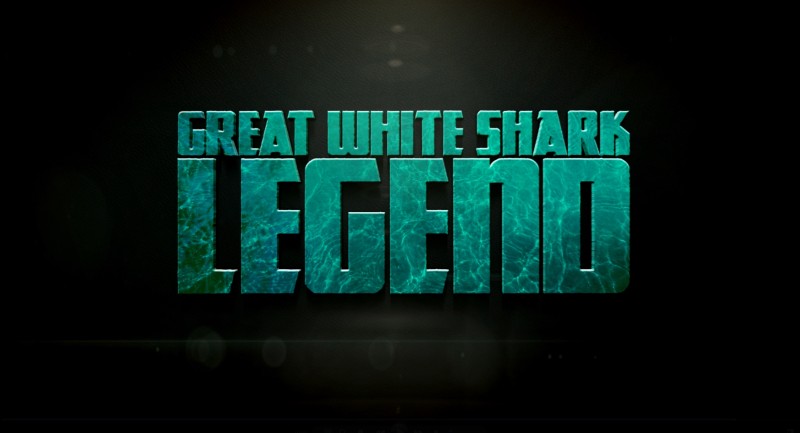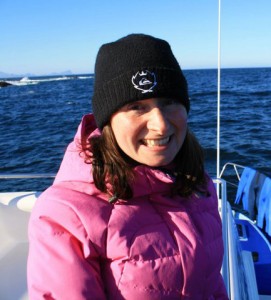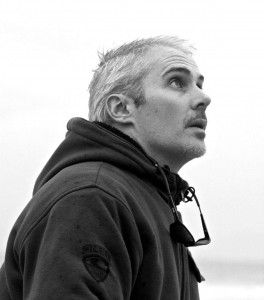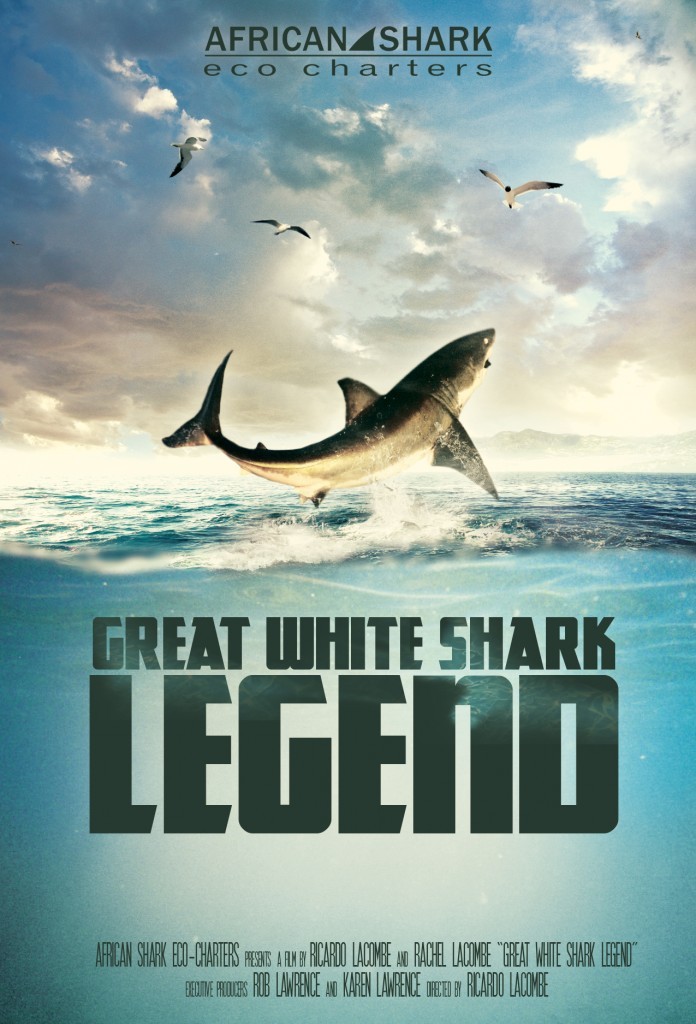Marine Life & Conservation
Great White Shark Legend: The Interview, Part 2

Jeff Goodman interviews Ricardo and Rachel Lacombe about their film, Great White Shark Legend
Great White Shark Legend is a well thought out and developed film. It is sensitively filmed and directed as well as being very informative and revelatory in both hard facts as well as emotional content. I talked with Ricardo and Rachel Lacombe about its making.

Rachel Lacombe

Ricardo Lacombe
Read Part 1 here.
Part 2
 Jeff: Where there any favourite moments while making the film, and if so, are they in the final product?
Jeff: Where there any favourite moments while making the film, and if so, are they in the final product?
Ricardo: It was a lot of hard work, and very long hours, and sometimes harsh weather out there, so sometimes it did feel more like work. Which it was. However, to help you take stock of what you are actually pointing your camera at, nature sometimes threw me a reminder.
One was a breach we captured on film. We never intended this to be what I call “camera porn”. Every year TV shows have to ramp up the technical aspect of things like high frame rate slo-mos and getting cameras into new places. I get it, and understand the TV rational for doing so. But that wasn’t our film. But one thing we HAD to capture well for at least just one shot was a big breach. It’s really challenging to be on a full zoom lens with the boat bobbing around while towing a decoy. It makes you feel motion sick and you need steady legs and steady hands and gear. One tow we had been filming for around 40 minutes and coming to an end with no success when this magnificent breach happened. Shark full out of the water, upside down, flipped around. It happens in a second and I knew it was a stunning breach. No one got it because everyone had tired arms and eyes but I thought I had. I ran back to the cabin and played it back and it was in frame and in focus and I almost cried that I had been able to catch such a display on basic gear. I put the camera down and went out to look at the sea for a while with deep breathes of sea air in my lungs and thought “this is nature and I am humbled to be here”. That’s the shot that introduces our section on breaching in the film. It’s not the most technically exaggerated shot, and it’s no BBC Wildlife competition by any means, but for me it marks what this journey of viewing Great Whites is all about.
Rachel: The really cool thing was getting to spend time and really get to know those who work in the shark industry, which was a privilege. But the real honour is sharing a small boat with other shark advocates, the guests on board. Being in this truly magical place of False Bay and witnessing these displays of awesome nature at work is only heightened by the fact that you get to share that magic with other people. The ASEC guys get this and that’s why we wanted to work with them so much. A great example of this, and a personal favourite of mine, was with a guy from Brazil called Tiago. We had seen him on several trips over a week or two on the boat photographing sharks. He was very reserved and quiet but once we got talking to him (and saw his incredible images) we realised what a passion we shared. We ended up with a night over the dinner table in a local restaurant where we made friends with this awesome guy and then I got to share the cage with him on a few dives, which was beyond incredible, because I knew and understood the person with me watching these sharks swim around us.
Jeff: I remember well the first time I ever dived with sharks – it was exactly two weeks after seeing the movie Jaws. The film did give me a few restless nights but as soon as I got into the water with them (reef sharks, not Great Whites) I was completely relaxed and awed. How was the build up for you to your first dive? What were you thinking and hoping for the first time you climbed into the cage to be underwater and close up to the sharks?
Rachel: I was absolutely terrified. I remember my husband mixed up our first days itinerary (when we went in 2011 on holiday, not the filming!) and we thought we had another day before the first dive, until our guest house owners came to see us to tell us that ASEC had been in touch to confirm that we were good for our dive the next day. Next day?! I lay in bed that night terrified! On the jetty down to the boat the next morning my knees were literally knocking together. I was shaking.
As I climbed into the cage I thought I might die. I was that scared. I still thought it was really dangerous. Once in the water and seeing how relaxed sharks were I relaxed and started to enjoy it and all those misconceptions just disappeared in seconds. I cannot stress this enough. If you believe what is shown to you in popular media, you will discover once out there that what they show you is about 0.5% of what actually occurs. So the build-up was the only fearful part, in my own mind, not the sharks. They were far from scary.
Ricardo: For me it was not so much a fear of sharks, it was a fear of open water. I would not even go beyond knee deep in a lake for a ridiculous fear that something is there. It was always the water though, the expanse of it, the feeling of being out of your element. So the proposition of being out on a boat in the open water was in my mind constantly and it terrified me going out there. The sharks came second to that. Until, like Rachel, we got out there and it all changed. The trip out on that first dive in the early hours of the morning with the sun only just about to peek out behind the mountains was just life changing – before we even saw a shark! The first encounter I had up close was five minutes into the cage. My wife prodded me and motioned to me. I turned to my right and a 4 metre Great White was heading right for the cage, probably confused and unfortunately, briefly, it had its nose in the cage, which is not good for anyone. However, from a fear of open water only hours before I was staring through my dive mask at the open throat of a Great White Shark just half a metre from my face and it was a serene and peaceful moment. Talk about a defining marker in my bond with open water!
Jeff: By the way, what cameras did you shoot particular aspects of the film with?
Ricardo: We used a combination of some Sony HD gear, there’s some shots on Red cameras, there’s some cheap little camcorders, and there’s a ton of GoPro’s! Part of the pitch to get GoPro involved was just how versatile their cameras are and how we could prove we could utilise them to a greater extent for film making, rather than just sports and action activities – so that came with a desire to use them as much as possible. They graced me with the new model that was out at the time, the Hero4 Black, and I shot a ton of stuff in 2k and 1080 60fps. They were amazing! I don’t to focus on gear to be honest and rarely discuss in detail unless I have to, because having used everything from the most expensive cameras to the cheapest cameras I am well versed in plenty of hardware….but to get too involved in gear I find can be intimidating for new film makers and students. There’s a misconception that you have to have the best of the best but it depends on what you are filming. That’s why I loved hooking up with GoPro and it’s been a fruitful relationship since. These tiny cameras open up a world for film makers, especially divers, if you can just get past the peer snobbery which exists way too much. A game changer for me was when the documentary “Searching For Sugarman” won the Best Documentary Oscar and there’s was a load of material in that film shot on a phone! So gear talk is cool in some respects but get your story in place and the gear is not that important. Underwater film makers are currently turning off and calling me names by the way which is fine, I can take it!
Jeff: The film version I saw ran for 94 minutes, which is quite a long time for a documentary. What determined its length?
Ricardo: It’s a longer time for a TV broadcasted documentary but not for the modern indie feature documentary, which was always our intent. We never intended it for TV, largely because of the running time restrictions. The length was always a discussion between us, as we started with many weeks’ worth of footage and once pieced together against our original structure it ran at approx. 4 hours! Obviously that had to come down. We got down to 2 hours, then a 1hr 40mins cut and then a final trim down to 94mins.
We would normally determine a running time by the needs of the story but in this case we had such a different need from our potential audiences. For the shark nuts out there we know full well a 2 hour cut would have been heaven to bring in a ton more debate, discussion and more shark footage. But a more casual viewer, who we desperately wanted to appeal to, would turn off. So the running time and structure is a balance of the two. At some point you have to draw a line and say “it’s done” and put it out there as a piece. We get so many reactions from “wish you had put more in” to “you put too much in” and somewhere in between!
Rachel: As ever I am always quite critical of Ricardo’s work! That’s how we work. If I wasn’t happy I said so, much to my husband’s disappointment. In the end he always agreed with me, even if it took him a week to come round to it. He would get completely stoked about a particular section or interview and I would be more objective about it as I was not the editor, I hadn’t spent the last week working on a ten minute section. So we really made a great team as we both had different audiences in mind and how much of each topic they would be interested in. Like Ricardo said, the intention was always to make a feature documentary. We have had broadcast offers, which would require getting down to 60 minutes or less, which would never work for us. Sadly, so many of those offers asked for more blood and guts and teeth and could we add more in. Clearly that was not for us.
Come back for the 3rd and final part of Jeff’s interview with Ricardo and Rachel next week!
Haven’t seen Great White Shark Legend yet? You can buy or rent it at www.greatwhitesharklegend.com.
Marine Life & Conservation
Paul Watson Released as Denmark Blocks Japan’s Extradition Bid

Renowned anti-whaling activist Paul Watson has been released from custody in Greenland after spending five months in detention. Denmark’s Justice Ministry rejected Japan’s request for his extradition, citing insufficient guarantees that his time already served in custody would be credited against any potential sentence.
The 74-year-old Canadian-American was arrested on July 21 in Nuuk, Greenland’s capital, when his ship docked to refuel. His arrest was based on a 2012 Japanese warrant related to a 2010 encounter in Antarctic waters. Japan alleged Watson obstructed operations and caused damage to a whaling research ship during efforts to disrupt illegal whaling. Watson has consistently denied these claims, maintaining his commitment to marine conservation.
Denmark, which oversees extradition matters for Greenland, concluded that while the legal conditions for extradition were met, the lack of assurances from Japan regarding time-served credit made extradition untenable.
In a video shared by his foundation, Watson expressed gratitude and relief, saying, “After five months, it’s good to be out… and good to know they’re not sending me to Japan.” He added that the most difficult part of his time in custody was being separated from his two young sons.
Watson is a pioneering figure in marine conservation, known for founding the Captain Paul Watson Foundation in 2022 after decades of activism with the Sea Shepherd Conservation Society. His bold efforts to defend marine life have earned him widespread support, including from celebrities and conservationists. His work has also been featured in the acclaimed reality TV series Whale Wars.
Watson’s lawyer, Jonas Christoffersen, praised the decision, stating, “We are happy and relieved that Paul Watson is now free.” He added that Watson is eager to reunite with his family and continue his vital work.
The arrest occurred while Watson’s vessel, the M/Y John Paul DeJoria, was en route to the North Pacific with a team of 26 volunteers to intercept a Japanese whaling ship. His foundation described the arrest as politically motivated and emphasized that Watson’s actions were focused on ending illegal whaling practices.
Japan resumed commercial whaling in 2019 after leaving the International Whaling Commission, asserting that whale meat is a cultural tradition. Conservationists, however, continue to challenge these practices, highlighting their impact on marine ecosystems.
Despite the challenges, Watson remains steadfast in his mission to protect marine life and bring attention to whaling practices. His dedication to ocean conservation has made him a globally respected advocate for the environment.
Marine Life & Conservation
12 Days of Zero-Waste Fish-mas

This holiday period, the Marine Conservation Society, the UK’s leading ocean membership charity, invites you to make some simple changes to eating fish this Christmas to help our seas.
Dr Kenneth Bodles, Head of Fisheries and Aquaculture at the Marine Conservation Society, said, “During the festive season, our consumption increases, but so does waste. Sustainability isn’t just about where food comes from – it’s also about how you use it. By reducing waste and making the most out of your seafood, you’re not only taking steps to be more ocean-friendly, but can also help to cut costs during what is often one of the most expensive times of the year”.
The Marine Conservation Society has compiled twelve tips on how to consume seafood sustainably with zero-waste this Christmas:
Buy whole fish instead of fillets
Instead of fillets, consider buying whole fish such as salmon, hake, or lemon sole. By adopting a “nose to tail” approach with cooking, whole-baked fish not only feeds a crowd, but also helps to minimise waste and maximise sustainability by using up every part of the animal, including bones, skin, and fat.
Make fish stock
Leftover fish bones or shells can be put to good use by boiling them to make a nourishing fish stock or bisque. This can be frozen and preserved for later use and makes for a flavourful base in a soup.
Make your own fish pâté
Avoid waste by turning leftover fish, such as smoked mackerel or salmon, into a delicious pâté by blending with cream cheese and lemon. Perfect when paired with crackers.
The sustainability of salmon and mackerel varies depending on where and how it is caught or farmed. For more information on green-rated options, check the charity’s Good Fish Guide.
Buy frozen
By purchasing seafood that is frozen or vacuum-packed, this helps to reduce waste by extending the shelf life of your food.
Fish pie
If you’re wondering what to do with leftover cooked fish, why not opt for a classic fish pie with mashed potatoes, leeks, and a cheesy sauce? A sure crowd pleaser on Boxing Day.
Use the head
Don’t forget the fish head! The meat is incredibly tender and flavourful. The charity recommends a cod’s head curry or recreating Fallow’s renowned cod’s head in siracha butter.
By stretching your ingredients further, not only is this a more sustainable way to enjoy seafood, but also cost-effective by repurposing leftovers and cooking creatively.
Boxing Day brunch
Mix leftover kippers or smoked salmon with scrambled eggs for a tasty, zero-waste, Boxing Day brunch.
For best choice, make sure you buy kippers, or herring, from the North Sea and the North Irish Sea.
Zero-waste storage
A top tip from the Marine Conservation Society to avoid waste is freezing fish offcuts to save for future use.
Crisp up the skin
Even leftover fish skin can be turned into a quick savoury snack by crisping it up in an air fryer with a little olive oil and salt.
Anchovies two ways
Leftover anchovies can either be blended with butter to make a delicious anchovy butter or tossed into pasta for a hit of umami flavour.
The charity recommends opting for anchovies caught in the Bay of Biscay for best choice.
Fishcakes
For an easy, zero-waste meal, leftover seafood trimmings can be mixed with mash and fried in breadcrumbs to make fishcakes.
Pickled mussels
Try pickling mussels in 1:1 vinegar and water, with a dash of sugar for a sustainable, zero-waste snack that can be enjoyed well beyond the festive season.
Mussels farmed in the UK are a seafood superhero. Grown using low-impact methods and harvested by hand, they get all the food they need from the sea around them. This makes them one of the most sustainable, ocean-friendly, and cost-effective seafood options.
Players of People’s Postcode Lottery have raised £6.6M towards the Marine Conservation Society’s vital work in making seafood more sustainable.
Laura Chow, Head of Charities at People’s Postcode Lottery, said: “Fish is a festive favourite for many, but making sustainable choices when it comes to how we buy and eat seafood makes all the difference for our ocean. Support from players of People’s Postcode Lottery has helped the Marine Conservation Society further its sustainable seafood work, so that we can all enjoy healthier, better protected seas.”
The Marine Conservation Society encourages you to make sustainable seafood choices a year-round habit, not just for Christmas. To check how sustainable the seafood on your plate is, you can visit the charity’s Good Fish Guide. The Guide helps consumers and businesses identify the most sustainable seafood using a simple traffic light system, based on where and how species are caught or farmed. Green is the best choice, amber means improvements are needed, and red indicates fish to avoid buying.
Zero-waste gift idea
Why not embrace a zero-waste Christmas by gifting a membership to support marine conservation? It’s a meaningful, low-waste gift that helps protect our ocean for generations to come. Memberships start from as little as £5 a month – the price of a sandwich and drink from your local coffee shop.
Find the latest sustainable seafood advice for wild-caught and farmed seafood on the Good Fish Guide, downloadable to your phone from www.mcsuk.org/goodfishguide.
-

 News2 months ago
News2 months agoIconic SS United States to become the World’s Largest Artificial Reef
-

 News3 months ago
News3 months agoBook Review – 52 Assignments: Underwater Photography
-

 Gear News3 months ago
Gear News3 months agoDYNAMICNORD – New German diving brand enters the British market
-

 News3 months ago
News3 months agoExploring Cenote El Pit: A Diver’s Dream
-

 Gear News3 months ago
Gear News3 months agoTry BARE drysuits (and maybe even win one!) this Friday with Sea & Sea at North West Dive Fest
-

 Marine Life & Conservation3 months ago
Marine Life & Conservation3 months agoBook Review: Coral Triangle Cameos
-

 Blogs2 months ago
Blogs2 months agoDive the Egyptian Red Sea this Autumn with Regaldive
-

 News3 months ago
News3 months ago2024 Ocean Art Underwater Photo Competition Announced



